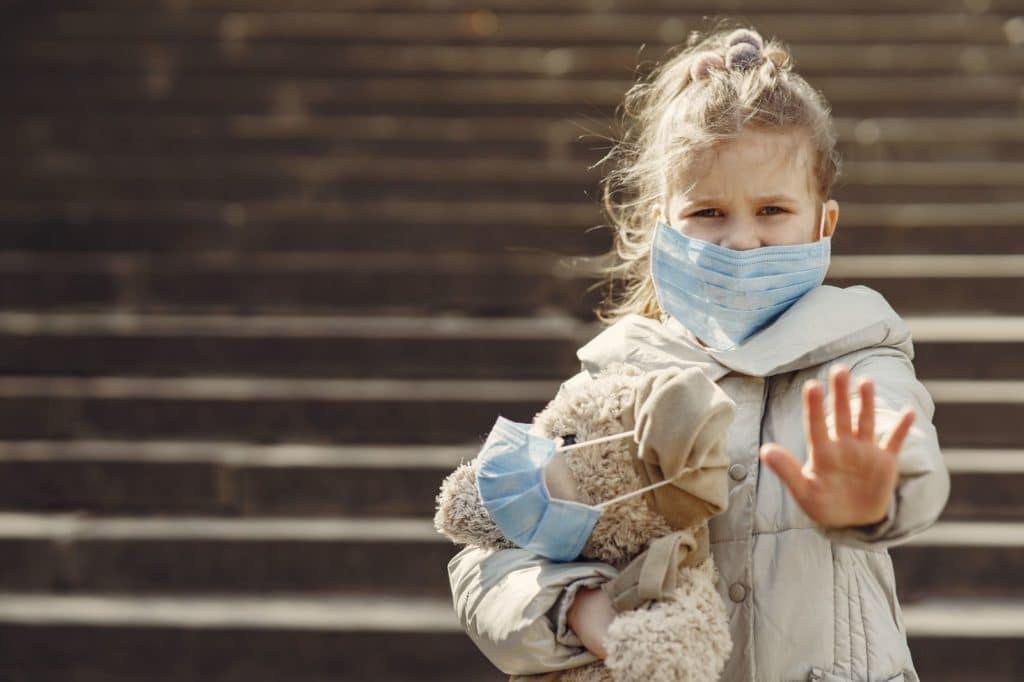As teachers adapt to the complex challenges of online instruction during the coronavirus pandemic, another vital area can’t be forgotten: detecting signs of child abuse from afar. During times of stress and uncertainty, child abuse actually increases, according to Kayla Bailey, director of prevention and community awareness at ChildSafe, a children’s advocacy center based in San Antonio, Texas, that strives to restore dignity, trust, and hope to children traumatized by abuse and neglect.
“When individuals are trapped in their homes with the increased stress of health risks, layoffs, and food insecurity, abusers are more prone to violence. There has already been a 21% increase in domestic violence calls to San Antonio Police Department during this time,” Bailey said.
Child Abuse Calls Decline Amid School Closures
While family violence calls have increased over the past few months, child abuse incidents have actually declined across the U.S. due to a reduction in reporting as families shelter in place. For instance, Los Angeles County’s child abuse hotline calls have dropped 60% per day (from 1,000 calls per day to just 400). Texas, Colorado, and Illinois, among other states, have also reported fewer child abuse incidents since stay-at-home mandates went into effect.
In Texas, hotline tips to the Texas Department of Family and Protective Services fell from 11,179 a week to 9,344 from late-February to mid-March after school closures took effect. The primary reason for fewer reported cases: Teachers aren’t able to see students in person to spot potential abuse warning signs.
“Teachers are often the first to notice a change in student behavior and other red flags due to the amount of time they spend with children in the classroom. With schools closed, children with injuries are less likely to be spotted,” Bailey said.
Whether a teacher spots the signs of abuse inside the classroom or a student feels comfortable enough to approach a teacher to report abuse, schooling from home changes that dynamic, leading to fewer abuse reports from students because they fear their abuser, who may be inside the home.
This trend coincides with what is typically seen during the summer months — a decrease in abuse reports while students are out of school followed by an increase when school resumes, according to Bailey. If there is an increase in child abuse since the coronavirus outbreak, which healthcare officials believe to be the case, it likely won’t be reported until the COVID-19 pandemic dies down and children return to school.
How to Detect Child Abuse Virtually
Even during the current pandemic, teachers remain on the frontline of child-abuse detection. In fact, educators can detect abuse virtually in the same way they would inside the classroom, according to Bailey.
“Teachers should continue looking for the same signs they would in their classrooms just in the scope of what they can see/hear in the virtual setting,” she explained.
For instance, the following signs of abuse can be detected both during an online video teaching session and in person:
- A change in the child’s appearance (visible signs of abuse, lack of hygiene, weight loss, etc.)
- The child appears to not wear appropriate clothing for the environment
- The child appears uncomfortable, scared, depressed, or as if something is bothering them
- Concerning sounds or language during virtual visits (yelling, cursing, arguing)
- The camera view reveals an unkempt household and/or hazards, such as drugs, medication, alcohol, or gang-related paraphernalia
Other potential signs of abuse include memory problems, loss of language skills, and recurring fatigue.
ChildSafe Offers Virtual Training: “Recognizing & Reporting Child Abuse Virtually”
To help teachers detect child abuse situations while providing long-distance education, ChildSafe recently introduced its “Recognizing & Reporting Child Abuse Virtually” virtual training session. During the 1 ½-hour virtual class, educators learn how to identify and appropriately respond to possible signs of abuse and neglect in their virtual classrooms.
“Our team has worked diligently to design a virtual training experience to assist educators in identifying and appropriately responding to possible signs of abuse and neglect in their virtual classrooms,” Bailey said. “As one of the experts in trauma and child abuse in our community, we feel it is our responsibility to support our educators and service providers with tools they can use during a time when many aren’t sure what to do.”
Through April 24, more than 400 individuals have attended the online training, and more sessions have been scheduled for May based on the positive attendee response. In fact, post-session feedback collected from attendees indicated that 99% reported they learned something new about recognizing child maltreatment in a virtual setting and 100% reported feeling better prepared to report any suspected child maltreatment.
What to Do if You Suspect Abuse
If you suspect a student is being abused, ChildSafe recommends that you take the following steps:
- Immediately report the abuse to Child Protective Services or local law enforcement.
- You don’t need “proof” to file a report. Leave the investigating up to local authorities.
- Don’t discuss the allegations with anyone else, including relatives or coworkers to ensure any investigation is not jeopardized. You also don’t want to betray the child’s trust.
- If the child is injured and needs an immediate medical evaluation or a forensic examination, you can call ChildSafe or your local authorities for further advice.
For ChildSafe’s complete list of child abuse reporting recommendations, click here.
“During this unprecedented COVID-19 crisis, ChildSafe is asking you to keep your eyes and ears open to children and families in your neighborhoods. Look for signs of abuse or neglect, listen for cries of help, and watch for other forms of distress that may emerge during these session. And if you see or suspect something, please report it!” Bailey urged.
For more information about ChildSafe and its “Recognizing & Reporting Child Abuse Virtually” virtual training, contact ChildSafe online or call 210-675-9000. To search for upcoming ChildSafe sessions, visit its virtual training calendar here.










